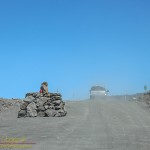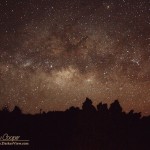Note: This is an editorial that I wrote a while back. It was originally published in Civil Beat on August 18th, 2016. It appears here in the original form (pre-editor) and with far better photos…

While many frame the argument as one between science and culture, others frame it as one of development versus culture. Their premise is that somehow building another telescope is destroying local culture. They overlook the opportunity the telescopes represent, that the right economic development can support a community, preserve a culture.
Supporters of TMT highlight the jobs that the telescope will bring… “It is not about the jobs!” is the reply from opponents. Of course it is. You cannot maintain a culture in poverty. You cannot maintain a culture when your keiki leave to seek opportunity elsewhere. Leave the island behind… Leave the culture behind. Economic struggle is the greatest single threat to a local culture, a threat that cannot be overstated.
The lack of economic opportunity has an enormous impact on a local community. The stress of struggling for a living, of getting by on a low paying service industry job can be destructive to families and individuals. Drugs use, family abuse, all of the social ills so often identified in low income areas are as destructive to the culture as they are to the person. The statistics tell the story… Hawai’i Island routinely tops rest of the state in numbers that are not good…. Lowest per capita income, highest number of children living in poverty, unemployment and more.
Astronomy is not the entire answer here, it is however a major pillar supporting the island community. In 2012 alone $58 million was brought into the Hawai’i Island community by the observatories. This money was used to buy goods and services and cover payroll. Money brought from the outside has a much larger impact as it is spent and re-spent through the community. Payroll gets spent on groceries and rent, to buy meals and vegetables at the local farmers market. This spending and re-spending magnifies the effect so that the economic impact was estimated to be $91 million for the island alone. The important part to consider is that this money comes from off-island, the observatories bring it here, monies that would not otherwise be available.

It is another oft repeated misconception that only scientists get to step inside the observatories. That somehow the observatories exist apart from the community. Again this is simply wrong… The local staff who maintain and operate the telescopes are very much part of the community. Most of the astronomers who use the Mauna Kea observatories do not live or work here, they belong to universities and research institutes across the globe. They come here for a few days, use the telescopes, and then go home. Astronomers do not fix telescopes. Mechanics, welders, electricians, engineers, and technicians fix telescopes. You do not need people who can do complex differential equations on the summit crews, you need folks who can swing a wrench. Checking the Keck Observatory job listings currently shows five openings, three are jobs that do not require an advanced education, two machinists and a technician are needed.

This wealth of economic activity supports the island community, supports island families, and supports the local culture. The observatories offer an opportunity to stay here and raise a family where one grew up.
This is an opportunity gifted to the local community by the presence of Mauna Kea. On the mainland many Native American tribes face the same problem and have turned to other profit making ventures to attract money into their communities and provide employment to their members. Many of these ventures have serious drawbacks, both environmental or social, finding business opportunities willing to invest in tribal ventures can be challenging. Casinos illuminated in glittering lights have appeared across the country, while often profitable they bring a host of other issues both practical and moral. The observatories offer both excellent job opportunities along with an effort that is completely in harmony with the values of Hawaiian culture.
Of course it is more than the money. Along with economic support the observatories bring a value that cannot be measured in dollars, they bring dreams. The domes atop Mauna Kea represent the finest aspirations of mankind, our best values, people from across the globe and from a dozen nations working together for a common goal. A demonstration to all who grow up on this island that dreams can be achieved. Many have chosen to pursue those dreams. While those paths may not always lead into astronomy, they are often inspired by the values and dreams astronomy brings to Hawai’i.
Our exploration of the universe is led by the great observatories atop Mauna Kea. It is a direct continuation of the efforts of the ancient navigators who explored a great ocean with skill and daring. This journey continues atop the mountain, exploring our universe, a vast sea of stars and galaxies.


Amen Brudda
Mahalo for your sensitivity and insight.